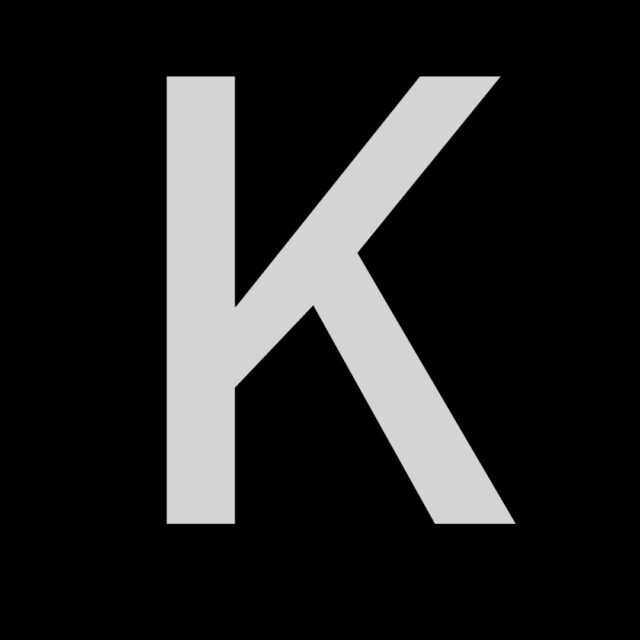Brief dictionary of humanity
A word for each letter of the alphabet


Let's go!
A word for each letter of the alphabetThat’s it! A word for each letter of the alphabet: seemingly simple words that relate to our everyday lives. We’d like to share them with you in a light-hearted way, as a conversation starter or a moment for pause and reflection, without the pretext of teaching, explaining or providing maxims. It is not by chance that we often use the expression “in our experience” as this is what it’s all about: sharing with you and the people we meet through work or in our private lives, things we have been experimenting on ourselves daily for years. Given the nature of the experiment, we’d greatly appreciate your feedback. Which one of the words of our alphabet resounds the most for you? Help us in co-creating and enriching our brief dictionary of humanity.
WHY DO YOU DO
WHAT YOU DO?


Aim
WHY DO YOU DO
WHAT YOU DO?We’ve all had times in our lives when we’ve felt particularly inspired, when we’ve enjoyed a feeling of fullness and joy, moments in which we had no doubts about what we were doing and where we were going. This almost magical condition makes our eyes shine just thinking about it. Is there a way to recreate this feeling? In our experience, yes, there is a way and it’s by learning to reconnect with our deepest aspirations, uninhibited by social or personal conditioning (that inner voice: I’m not good enough, I’m fooling myself, they’ll judge me, I won’t be understood…). For this to happen, it is necessary to intercept and face a series of hidden fears that we may not even be aware of. Dancing with these fears allows us to dare to become who we want to be. After all, it’s not what we achieve but what we become that makes us happy.
HOW ARE YOU BEHAVING?


Behaviours
HOW ARE YOU BEHAVING?Despite our best intensions, there are times when we unconsciously behave in ways that work against us, that prevent us from accomplishing something we want. Procrastination is a good example. Many of us procrastinate, although each for their own reasons: some of us wait for the “right moment”, others fear rejection and yet still others feel uneasy, etc. Whatever the reason, we tend to either justify or blame ourselves, or promise to do things differently in the future. How can this mechanism be put on hold? In our experience, the first step is understanding when and why we are engaging in this kind of behaviour. With newly gained awareness, we have the opportunity to decide to transform this behaviour and discover what happens. Often, when we manage to do so, not only does our outlook change but the context itself changes.
QUALITY OR STATE OF BEING


Creativity
QUALITY OR STATE OF BEINGIn our experience, creativity is a state of being that is closely related to aspiration and freedom. When we connect with our aspirations and feel free to express ourselves, we tend to create a context of openness, trust and welcoming. When we break free from certain limiting thoughts and beliefs, such as self-judgment or judgement of others, or the fear of being judged by others, it is as if we open ourselves to greater opportunities, ideas, stimuli and intuitions that we can embrace, explore and share. Much like the feeling of lightness, inspiration, joy and energy we have at the start of a new relationship. Such a state of being is contagious to those around us, creating a virtuous circle of exchange that renews itself perpetually. Of course, it’s not as if this can happen at the press of a button, and it takes time, but knowing that it is possible to rediscover this state of being is like …. well, it is different for each of us. 🙂
HAVE YOU FOUND YOURS?


Direction
HAVE YOU FOUND YOURS?We are often at the mercy of events and of others. We feel confused, or even worse, as if the road we are on is a dead end and we don’t know how to get off it. The direction to take seems shrouded in doubt, uncertainty and fear. In these moments, it helps to reconnect with what we want to create for ourselves and for those close to us, and ask ourselves why we want it. The reason why may seem obvious at times, but it is that very reason why which allows us to verify that it is not something I feel “I should do” but because I truly want to. This reflection also gives us motivation and impetus to identify the steps necessary to guide us in the direction we want to go. Our reason why becomes the Northern Star, giving us our bearings in any situation. The beauty of it is that for each of us it is different. It becomes even more exciting when this orientation is created by members of a team, organisation or community. Joy and creativity are the true leaders.
TO MANAGE OR TO FEEL?


Emotion
TO MANAGE OR TO FEEL?Emotions are often associated with negative connotations and therefore need to be managed, controlled and silenced. How many of you have been told “you’re too emotional”, how many have felt emotions as an obstacle to their growth? In our experience (and for many before us, see David Goleman) our emotions are a fundamental door to understanding what is happening within us and especially for dealing with the situations we are facing. People who are capable of feeling their emotions have the chance to act based on the information they gather, instead of reacting automatically. Anger is a good example: many of us are ashamed of it, others do everything they can to stifle it. And yet anger is a valuable source when we get to know it, learn to understand where it comes from and why we are feeling it. This allows us to choose what to do, before taking it out on another person or refusing to recognise it at all, even to ourselves.
IN WHAT WAY DO YOU GIVE UP ON WHAT YOU WANT AND FEEL LIKE A VICTIM?


Frustration
IN WHAT WAY DO YOU GIVE UP ON WHAT YOU WANT AND FEEL LIKE A VICTIM?Who hasn’t dealt with this emotion? How often have you attributed your frustration to an external factor, telling yourselves “this situation is real, it’s my partner, my children, the stock market etc., what can I do about it?” The bad news is that, feeling like a victim in a situation that frustrates you actually deprives you of your power to react. The good news is that there is probably something you can do to get out of this state. There are various ways to do this. First of all, acknowledging your frustration can help you find out what is preventing you from taking care of the matter at hand. Even just seeing the situation from another perspective can be helpful. And finally, try to identify the resources at your disposal to intervene.
DID YOU REALISE THAT...?


Gratitude
DID YOU REALISE THAT...?In a time of restrictions and limitations, reflecting on the things you are grateful for can help take your mind off what you are lacking and the things that you miss. This exercise can be useful for those who continuously raise the bar of their goals or who feel they have to improve constantly (take courses, read manuals, etc.). The same is true for those who feel they can never stop “or all will be lost”. The object of your gratitude can vary in size and importance and depends on your individual sensitivity: it may be a person, a situation, a small daily achievement, a goal reached or even a ray of sunshine passing in the room. This may actually be more difficult to do than you imagine. We suggest pausing for a moment before falling asleep to reflect on three things you are grateful for.
HEARTS OR SPADES?


Heart
HEARTS OR SPADES?The heart is central and not only from an anatomical point of view. The heart seems to be one of three brains in the human being [https://….]. In our experience, when we put the mind at the service of the heart, it’s like adding intelligence and intuition and knowledge and feeling. When we trust in our heart we are more likely to create a connection with other people. It is not a question of “goodness” but of “speaking” a different, more direct language with the other. This is, of course, easier said than done. Many of us were raised on the idea that rationality wins all, especially with respect to emotions. We have been taught to stifle sensitive emotions which are considered inappropriate and that being emotional will get us nowhere and is a sign of weakness…
STAY OR LEAVE?


Immunity to Change
STAY OR LEAVE?Whether we like it or not, each of us has developed our own personal immunity to change by unintentionally implementing behaviours that in some way prevent us from fully achieving what we want in our lives. Regardless of our best intentions and abilities, we have a series of innate “resistances” hindering us. When we stop and work on these resistances we are astonished at the “walls” we have erected and the power they hold. Just seeing them is not enough. In our experience, they need to be taken down brick by brick. Each new small opening reveals a view of the world and of our life that is much greater than the barriers we have constructed.
How fast are you able to get up?


KO
How fast are you able to get up?There have surely been moments when we’ve felt overwhelmed, stressed, confused or trapped: KO. This may have occurred in this complex period of limitations and uncertainty. At times like this it can be worthwhile asking oneself questions such as: what are my prevailing thoughts and emotions at present? What have I done to get out of my difficulties? Has it worked? What did I need in order to resurface? These reflections can serve two objectives: 1) allow us to verify if we really have managed to turn the page; 2) and, if we have indeed done so, we can treasure the thoughts, beliefs, emotions and behaviours that helped us and use them with awareness the next time.
WHAT IS YOUR MAP?


Journey
WHAT IS YOUR MAP?Yes, this is actually what it’s all about. Where do we want to go? What do we want to become and realise? What is our goal and the phases to get there? What do we want to discover? What resources and means does our journey require? Who do we want to accompany us? Like explorers of old, we can draw our map and decide to set forth. We will encounter obstacles on our way; the weather will not always be perfect; we will encounter our Sibyls and all will not go as planned. We will lose our way and adjust our course, and possibly change it bit by bit as we discover more about ourselves. When will we be ready to set forth on this journey and enjoy the marvel of a lifetime?
ARE YOU READY FOR THE CHALLENGE?


Let go
ARE YOU READY FOR THE CHALLENGE?How about letting go of the beliefs we hold about ourselves? The ones we don’t dare to confess even to ourselves, but that exist and influence many of our choices. What if for once we question beliefs such as “I’m too fragile, inadequate, or I’m not up to it”. Each of us has one belief that dominates their other ones. Such a conviction is atavistic and has been with us for a long time. What would happen if we let it go? If we didn’t have it, what kind of possibilities would arise? What could we make happen? Which projects or dreams? What could we try, dare, and discover? What new opportunities would come our way and which roads would open? In our experience, identifying this belief and really questioning it, moment by moment, changes our way of looking at things, our behaviour and our very being.
WHICH ONE WILL YOU WEAR TODAY?


Mask
WHICH ONE WILL YOU WEAR TODAY?We all tend to wear a mask. There are those who prefer the “I’m reliable” mask, the “I’m brilliant” one, or that of a competent, well-prepared person. We do everything possible for people to see us this way. We have a mask for every occasion: work, with our partner, children, friends, etc. We hide behind a mask as we fear the judgement of others for some reason (each of us has their own reason, such as feeling like an imposter or not feeling up to task, etc.). Our experience has shown us that when we remove our mask and show ourselves for what we are, with our qualities and our vulnerabilities, we create a sense of communion with those around us. It’s like creating a space that is different from the usual attack/defence interaction. Such a space is more authentic as there are no masks but simply human beings.
CAN YOU SAY IT?


NO
CAN YOU SAY IT?In order to say yes, we must allow ourselves to say no. It’s the only way for us to know if a decision made is the result of choice or is made at the mercy of something that we feel we must do, or that is expected of us, but that is actually far from what we really want. This expression comes in handy periodically when we work on the vision of what we want to create in our personal and professional lives, and in society as a whole; when we design our projects, objectives and the results we want to achieve in a specific timeframe. The possibility of saying no from time to time is, on one hand, to verify our sense of freedom of choice and, on the other, our true will. It is a test that checks what we really want, beyond the various conditionings we may have, both internal and external. Leading with no weans us from our ego and allows us to play the adult role we want to play.
WHERE ARE YOU GOING?


Objective
WHERE ARE YOU GOING?Many of us are used to working in function of results, like purebred pit bulls that won’t let go. And how great is the satisfaction on reaching these results! Now, let’s stop and ask ourselves: how long does this satisfaction last? How soon do we set new results to be reached? And, looking even deeper, let’s ask ourselves what we gave up on our way to achieving these results (ex. time with our children, partner and friends; for our hobbies etc.)? How has this limited our perspective? For a moment, let’s stop and reflect on our vision and objectives: what do we want to realise in 5 years, 3 years or 1 year? With whom? In which projects? What do we need in order to achieve these objectives?
TO KNOW OR TO LIVE?


Pathway
TO KNOW OR TO LIVE?We all have defence mechanisms (originating in the EGO) that are time-tested over the course of our lives. Detecting these unconscious mechanisms in action is something we are rarely able to. We pay a price when we use them and so do those around us (colleagues, partner, children, friends) in terms of our relationships, health, wasted qualities, our ideas and projects. In our experience, being able to recognise these mechanisms is not enough. We must commit to a course of action to become acutely aware of their workings, what triggers them and the causes and effects they have on us and others, in order to decide what to do. Deciding whether and how to transform these mechanisms in a concrete way requires a pathway, with instruments and modus operandi (each of us has their own), in order to perceive our ongoing transformation and that of the world around us.
WHICH ONES ARE YOU WASTING?


Qualities
WHICH ONES ARE YOU WASTING?There are those of us who continue “improving” themselves by signing up to courses, reading manuals, taking webinars, etc. Others defend their acquired positions strenuously, worried that someone younger and more enterprising will take over, while there are those, instead, who prefer to remain in the background altogether. Some of us have difficulty recognising our qualities, others use only a few of theirs. Whatever your approach is, it may be that you are trying to silence your fear of not being up to task. We are so busy avoiding this fear that we waste the qualities we do have and that would allow us to give our individual, unique contributions. In this way, how many opportunities do we miss out on?
ANOTHER WAY OF SAYING FREEDOM?


Responsibility
ANOTHER WAY OF SAYING FREEDOM?To what extent are we responsible for our lives? And to what extent do we feel conditioned by the external situations in which we find ourselves (with our boss, mother/father-in-law, partner, in our role, etc.)? Challenging people on this question is something we enjoy doing, because, in our experience we can only truly be free when we effectively have our situation in hand. This means being the principal actor in what you want. You are free when you make the decision to go in the direction of what you want without being dominated by circumstances. The metaphor of the sailboat comes in handy here: the wind and the sea conditions may change, but you are the one with your hand on the helm.
DUTY OR BEING?


Shift
DUTY OR BEING?There are moments in which we feel angry, disappointed, frustrated or powerless and want to prove to the world, to our boss or our partner that we are right. At other times, when we feel connected to ourselves, to what we want and to those close to us, we feel gratitude for something that has happened and even joy, lightness and inspiration. In our experience, these moments can be attributed to two states of being: one in which we are at the mercy of events, other people or our own self-criticism and the other, a creative state in which we feel satisfied and an active part of our own lives. Is it possible to shift from one state to the other and decide to pass from a state of being at the mercy (which is more frequent) to a creative state? The answer is yes. We not only think this is possible but consider it an art. In fact, we call this the Art of Shifting, which has been a principal aspect of our work for over 40 years now. We experiment with it every day: there are times when shifting is difficult, in which we struggle with it and other times when it has a more immediate effect. One thing is for sure: we don’t ever want to go back.
KNOWLEDGE OR EXPERIMENTATION?


Theory
KNOWLEDGE OR EXPERIMENTATION?Experience always! This is obviously a provocation, but we like to underline that theory alone is not enough. For us, verification and experimentation on ourselves and with others – the teams and organizations of our over 40-year-long work – is essential. We are all different, each with our background of experiences, emotions, convictions and beliefs, and there is no theory that works for everyone. This is why we like working in partnership with our clients, before, during and after the workshop: experimenting with them on how to “apply” the theory to the reality of the moment and the specificity of each individual and context. Our intention is to be consistently engaged in making our visions happen and to be in a condition to give our desired contribution at work, in our family and in society at large. There is not one truth, each of us has to experiment with their own.
READ AS WEAKNESS?


Vulnerability
READ AS WEAKNESS?We will never tire of underlining that vulnerability is not a sign of weakness. Quite the opposite, showing our vulnerability demands great courage. Learning to expose our true selves, with our strengths, imperfections and fears, is extremely difficult. In our experience, however, it is the most direct way to create a true connection with another, to find solutions, discover paths to take together and projects to share, whatever the relationship we may have with the person in question (a colleague, partner, son or daughter). Showing vulnerability allows us to let go of the (false) image of perfection that we’d like to project and prepare a more genuine and open context, in which the other person can feel more at ease. Brené Brown, research professor at the University of Houston, has dedicated extensive studies on this subject that have resulted in books, courses and interviews. We will limit ourselves here to offering a quote from her work that we find particularly helpful: “The greatest opportunity we have to feel connected with ourselves and with others is the courage to be imperfect”.
BUT WHAT DO YOU REALLY WANT?


Will
BUT WHAT DO YOU REALLY WANT?How often do you stop and ask yourself “Ok, but what do I really want?” for my family, my team, my organisation? Assuming you’ve asked ourselves this question, how often has your answer been true, that is, coherent with your most profound aspirations rather than based on what is expected of you from your boss, your parents or children, etc.? Our experience has shown that many of us find this simple, yet complex question quite perplexing. Yes, perplexing, because there may be hundreds of reasons why we are unable to answer it. Observing these reasons can help you to understand whether you are the one conducting your life or if someone/something else actually is. Use this question like a mantra to discover your direction: WHAT DO I WANT?
TARGET OR THE UNKNOWN?


X
TARGET OR THE UNKNOWN?X as in the unknown: when you make a commitment and embrace the uncertainty of the result. In our experience, when you want to realise a project the first step is committing yourself to making it happen. You don’t know how it will go, but you commit yourself to proceeding along the required direction. Let’s take the metaphor of the sailboat; you don’t know what the wind will be or how rough the sea, but you can decide on your direction and commit to reaching your destination. You don’t know how you’ll get there or what choices you’ll have to make along the way, but you do know where you want to get to. If you capsize, slowdown or remain stalled, you will right yourself and set out afresh on your journey. The important thing is not to let go of the ship’s helm.
WHO DO YOU WANT TO HAVE BECOME IN A YEAR?


Year
WHO DO YOU WANT TO HAVE BECOME IN A YEAR?The year is an important arc of time for the support we dedicate to helping people connect to their profound aspirations, for working on personal visions, thinking big and imagining what contribution they want to make in their professional and personal lives. Naturally, this depends on the objectives of the individuals, teams and organisations that we work with. Twelve months allows time, not only to focus on the results, objectives and projects, but also for readjusting aim, as well as refining and learning to be consistent without losing creativity or doing as an end in itself. The latter conditions are those that take us off track in realising our most important projects. There is no greater thrill than seeing what we have become as individuals and as a team at the end of the year; how much of what we imagined actually materialised as well as what didn’t and why, or in what different form than we had imagined. When we have a vision and an objective, the arc of time of a year allows us to keep our feet on the ground and throw our heart at the obstacles.
